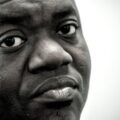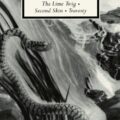The Novel is dead, long live the novel

Novelists announce the death of the novel with such sinister regularity you’d be forgiven for thinking they can’t wait to find themselves out of a job. It’s a cyclical theme, resurfacing when times of rapid technological advancement threaten to make obsolete the quaintness of good old-fashioned paper and ink. In 1992, for instance, The New York Times ran a piece by Robert Coover titled “The End of Books,” in which Coover predicted the passing of the traditional novel in the face of “video transmissions, cellular phones, fax machines, computer networks,” not to mention “avant-garde computer hackers, cyberpunks, and hyperspace freaks.”
In defiance of the hyperspace freaks and their fax machines, the novel rallied—but in recent years it’s become fashionable to speak once again of its demise. Consider a more recent high-profile attempt on the novel’s life. In his 2014 essay for The Guardian, “The novel is dead (this time it’s for real),” English writer Will Self eulogizes the novel, arguing not only that it’s dead but that it’s been dead for the better part of a century, faking life à la Weekend at Bernie’s since “about the time of Finnegans Wake.” Everything since then, according to Self, has been zombie novels, “instances of an undead art form that yet wouldn’t lie down”—apologies to all the writers wasting their time in the meanwhile.
It seems that when novelists get existential about their chosen art form they tend to fall into one of two camps. Descriptivists, like Self, seem content announcing the death of the novel and then going right back to scraping a living salvaging scraps from its ruins. Ostensibly satisfied simply to announce the Apocalypse, they spend no time messing around in it. And fair enough, Self readily acknowledges this in his essay, admitting that “it is quite impossible for me to foretell what the new dominant narrative art form will be—if, that is, there is to be one at all.” Taking his place among the old guard of the novel, the descriptivist assumes the honorable role of the captain going down with his ship.
Far more interesting are the heroic (if misguided) writers who take it upon themselves to breathe new life into the novel, saving it from a perceived oblivion. Whether these existential crises of the form are founded on legitimate threats or not, they often succeed in creating the conditions for mini-renaissances of experimental literature. These are the authors fighting to take the novel beyond its limitations and usher it—transformed but alive—into a new era of narrative art. They sally forth, starry-eyed with quixotic gusto, to meet the threat head-on. The history of the novel’s death has so far been a succession of crime scenes with nary a corpse in sight. It’s a chimera—but one that has helped to shape and define some of the liveliest post-Joyce zombie-novels.
The last decade has produced plenty such works of art, and it would take a more extensive essay than this to do them justice. But there is one novelist who stands out as particularly determined to act as vanguard for a new narrative form, one set to break once and for all through the limits of the traditional novel.
Known for his eccentric formal experimentation, Mark Z. Danielewski has been pushing against traditional definitions of what novels can and cannot be since his 2000 debut novel, House of Leaves. And while experimentation with the materiality of the book is something all Danielewski’s works engage in—some can be read both forwards and backwards, others must be turned upside-down, even folded, to uncover hidden meanings—none do so as ambitiously as his most recent project, The Familiar. The Familiar was planned to be a 27-volume series of novels, and Danielewski has been releasing episodes of this gargantuan series every eight months or so since the spring of 2015. The fifth volume was published in October 2017.
At around 800 pages of heavy, glossed paper per volume, The Familiar is tough to recommend for morning commutes. The opaque and mysterious story revolves around a young girl with epilepsy named Xanther and the strange series of events set into motion after she saves a cat. The deceptively flimsy plot is another cryptic element of Danielewski’s latest narrative rabbit-hole, though: Xanther’s story is interwoven with the stories of eight other narrators—each with their own font, color-coded tab, and distinctive voice—of varying degrees of (obvious) relevance to the main plot.
The Familiar demands faith that this will all make sense in the end, and it’s in the “making sense” of it all that the novel brings new life to the form. The reader is asked to pay careful attention to things like font changes, smudges in the margins, as well as clues that show themselves only when you turn the book upside down or sideways. Multiple short stories (referred to in the novel as “clips”) and videos by Danielewski have quietly appeared online, each deepening the mystery of the books. The author even curates online discussions, positing discussion questions and dropping enigmatic hints while giving readers a space to help one another with obscure references and untranslated foreign-language text in the novels.
Against fears of the novel genre’s demise in the face of e-reader technology, Netflix, and the blogosphere, Danielewski tries to enrich his books with the same digital media that comprises their existential threat. But as he does so the books remain, definitively and uncompromisingly, books. In a 2015 interview with The Verge’s Sean O’Kane, Danielewski discusses the difficulty and excitement of searching for a medium “that can seamlessly move across various platforms” in the rapidly-changing technological landscape we inhabit. For the author, this doesn’t mean sacrificing the old for the new: “For me, the ur-form is really the book,” he says, “the codex in your hands.”
With its emphasis on textuality, its full-color splash-pages, and its frequent use of typographic art, The Familiar couldn’t exist in any other form than as is. It barely survives the transition to e-book. Its material existence as novel is part-and-parcel of the experience, and it merely seeks to incorporate elements of our digital landscape into the novel form itself. The Familiar refocuses the reader’s attention on the novel as not only the vehicle for a story, but as a voracious technology ready to absorb its supposed enemies, with its own unique possibilities.
This centrality of the material book—and the reader’s manipulation of it—is a hallmark of what is often referred to as “ergodic literature.” According to Espen Aarseth, who coined the neologism in 1997, an ergodic book is one in which “nontrivial effort is required to allow the reader to traverse the text,” and Danielewski is an exemplar of ergodic literature—as anyone who’s ever been caught reading House of Leaves upside-down knows. The focus of an ergodic novel, according to Aarseth, “centers attention on the consumer, or user, of the text, as a more integrated figure than even reader-response theorists would claim.” The Author lives on, it seems, and—surprise!—it’s you, or rather, us.
This fusing of the wonders of our new technological regime with the tried-and-true materiality of the book has inspired a few notable literary projects in recent years. In 2015 English novelist Iain Pears published Arcadia, a convoluted novel released in tandem with an interactive app to help readers keep up with its various storylines in whatever way they see fit, subtly altering the cause-and-effect of the plot depending on the reader’s choices of what to read and when. With a more Danielewskian emphasis on crafting a novel that underlines the importance of its material bookiness, Doug Dorst and J. J. Abrams teamed up to create S., a beautiful book composed of a fictitious novel by a fictitious author (Ship of Theseus, by V. M. Straka), a parallel love-story that plays out in marginalia, and a series of inserts (handwritten notes, photos, maps, postcards, etc.) left by the same two people writing in the margins.
Like The Familiar and Arcadia, S. is a beautiful and exciting new take on the novel form for readers who are up to the challenge. These are also, crucially, love letters to the novel-as-is, to the ink-and-paper story bound in a book and intended to be read from beginning to end. Really, it’s this dimension that keeps “the death of the novel” at bay, always on the horizon but ever deferred. The allure of the codex technology containing the novel genre is more than nostalgia. In their 2015 study, “Why don’t we read hypertext novels?” Anne Mangen and Adriaan van der Weel find that readers still overwhelmingly prefer buying and reading “traditional” novels. “The reader, like the storytelling audience,” according to Mangen and van der Weel, “actually wants to relinquish control and be at the receiving end of the author’s manipulations and wants to be confronted with someone else’s consistently and cogently presented point of view so as to be able to test his or her own theory of mind.”
And yet, still, the anxiety never quite goes away. We can see this in the extent to which fitting The Familiar into the narrative of the death of the novel has been a popular trend among reviewers. “For five minutes, I thought this was it,” Jason Sheehan wrote in his 2015 NPR review of Volume 1, “the book which, finally, was going to bridge that… gap between the fusty old books of our grandparents’ age… and the mythical books of our future.” Likewise in an LA Daily News review by Allison K. Hill from the same year, wherein she writes that the series “mimics the best of the digital future we’ve been told to expect, while exploiting the best of print, that which we’ve been told to mourn.”
In reality, new technologies rarely efface those that they succeed. Video never killed the radio star, the novel never died, neither did poetry, neither did the codex. In fact, as of March 2018, paper books are doing quite well in the marketplace. A recent article by Zoe Wood, writing in The Guardian, is titled, “Paperback fighter: sales of physical books now outperform digital titles.” But the novel’s historical hardiness hasn’t stopped writers like Danielewski embarking on quests to revolutionize the form, to re-establish it beyond the reach of technological obsolescence. We should be glad it hasn’t. It’s quests like these that result in projects like The Familiar, which can never quite do what they set out to but are no less fascinating for their failure.
The situation brings to mind a parable by another writer whose work sparked a lot of talk about the rejuvenation of the novel: Roberto Bolaño. In “The Best Gang” Bolaño writes that if, for whatever reason, he had to hold up the most heavily fortified bank in America, he’d “take a gang of five poets, no question about it.” There’s a kind of fatalistic splendour in charging gallantly into a venture doomed from the start—when you know success isn’t in the cards, you can relax and enjoy the ride. “The attempt would probably end in disaster,” Bolaño admits, “but it would be beautiful.”
And indeed, The Familiar did end—perhaps not in disaster, but certainly sooner than expected. On February 2nd of this year Danielewski took to Facebook to report, “with a heavy heart,” that The Familiar was to be paused indefinitely. Thanking his readership for their involvement and dedication, Danielewski admitted that “for now the number of readers is not sufficient to justify the cost of continuing.” Though The Familiar’s small but dedicated fan base—and I count myself among them—may never get to hear the rest of Xanther’s story, we’re left with five beautiful volumes of a series of books unlike anything else around. I hardly regret that, despite the anticlimactic denouement.
In the end, out of these perceived crises of the novel, we get not just a lot of public hand-wringing about the fate of writers but also the beauty of quixotic projects like Danielewski’s The Familiar: writers attempting to reckon with the anticipated obsolescence of the novel by writing more novels—bigger, better, stranger ones. Neither doomsday prophets like Self nor form-transcending novelists like Danielewski, Pears, and Dorst have yet succeeded in completely replacing the tired old paperbacks of yore with a new breed of futuro-novels. The latter are, perhaps, doomed to failure by the hubris of having taken on an impossible task—but when the product is as much fun as The Familiar, can we hold that against them? They offer a notion of new paths forward, new appetites for the genre to satisfy, and fresh challenges against which to test the form’s ability to remain a vehicle for the stories of today.
They allow the novel to thrive, even as the projects themselves fail. Like Bolaño’s poetic hold-up, the pageant of the attempt justifies the futility of the cause, and we’re left with a beautiful disaster.
About Christopher Margeson
Christopher Margeson is an essayist and critic, and is currently doing graduate work in literature at Utrecht University in the Netherlands.





